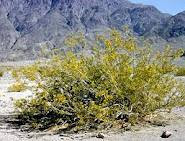IRONWORT, MOUNTAIN TEA, SIDERITIS SYRIACA
If you have ever had a cold or flu in Greece , and have Greek friends, then you will know all about Greek mountain tea, which comes from this plant. It is called “malotira” (better) in Crete , and is served in small cups or glasses in Turkey , with sugar or honey and lemon to flavour it. Sideritis plants grow throughout the Balkan region and can be found in temperate Asia and Central Europe , but Sideritis syriaca comes fro the Mediterranean region as the name syriaca, from Syria might suggest.
The genus name Sideritis means he who has iron, which is a reference to those who had been wounded in ballet by iron weapons. The plants were used as a wound healer although other suggest that the plant got its name because the flowers or sepals, look rather like spear tips.
 This mountain tea plant is in the mint family, the Lamiaceae or Labiatae family which means it has a whole host of relatives, which include, purple, yellow and white dead nettles, marsh woundwort, the teak tree, marjoram, basil, Holy basil, oregano, savory, thyme, lavender, lemon balm, Scarlet bee balm as well as bugle, motherwort, self-heal, catnip, the chaste tree, the small-flowered chaste tree, sage, ground ivy, Jupiter’s sage, wall germander, horsemint, Fragrant premna and hyssop.
This mountain tea plant is in the mint family, the Lamiaceae or Labiatae family which means it has a whole host of relatives, which include, purple, yellow and white dead nettles, marsh woundwort, the teak tree, marjoram, basil, Holy basil, oregano, savory, thyme, lavender, lemon balm, Scarlet bee balm as well as bugle, motherwort, self-heal, catnip, the chaste tree, the small-flowered chaste tree, sage, ground ivy, Jupiter’s sage, wall germander, horsemint, Fragrant premna and hyssop. The plant can grow to heights of more than a foot, and is best gathered in July when it is in full bloom and then dried for later use. In Greece , you can buy it in street markets in bundles, or in supermarkets in jars.
The essential oil has anti-microbial, antibacterial and antifungal properties and can be used for such ailments as candida in the same way as you would use Australian tea tree oil.
In clinical trials this plant has been found to have antioxidant properties and to prevent and / or inhibit the growth of cancerous tumours. It also has anti-inflammatory and analgesic actions as indicated in “Preliminary evaluation on anti-inflammatory and analgesic effects of Sideritis syriaca L. herbal extracts.” Menghini L, et al. 2005 Summer; Vol.8 (2):pp. 227-31. Journal of Medicinal Food. They conclude: -
 “The data from this preliminary study reveal interesting pharmacological properties of S. syriaca L. herbal extracts related to the marked analgesic activity and the absence of gastric ulcerogenic activity. The same is for anti-inflammatory activity, but in this case it seems to be related only to the apolar fraction.”
“The data from this preliminary study reveal interesting pharmacological properties of S. syriaca L. herbal extracts related to the marked analgesic activity and the absence of gastric ulcerogenic activity. The same is for anti-inflammatory activity, but in this case it seems to be related only to the apolar fraction.” In Turkey the tisane is used for coughs and as a diuretic to rid the body of excess fluid.
 So far the plant has only attracted researchers from the areas in which it grows naturally, although the tea is sold in
So far the plant has only attracted researchers from the areas in which it grows naturally, although the tea is sold in MOUNTAIN TEA RECIPE
Take some sprigs of the dried herb (about 3 per cup) and pour boiling water over them.
Leaves for 10 minutes and add honey (or sugar) and a slice of lemon, or squeeze fresh lemon juice into the cup.
This has Taste and is a Treat(ment).

































